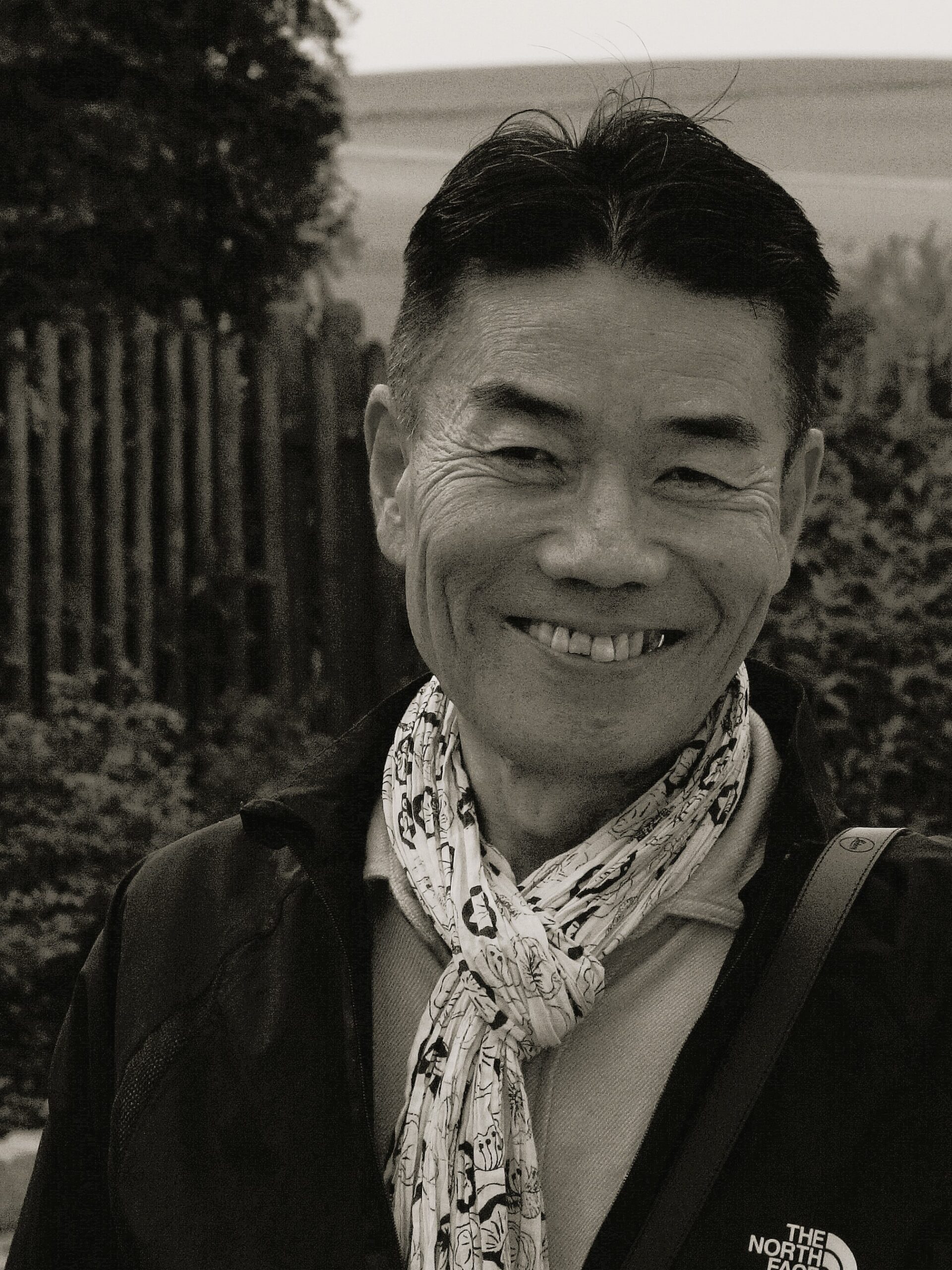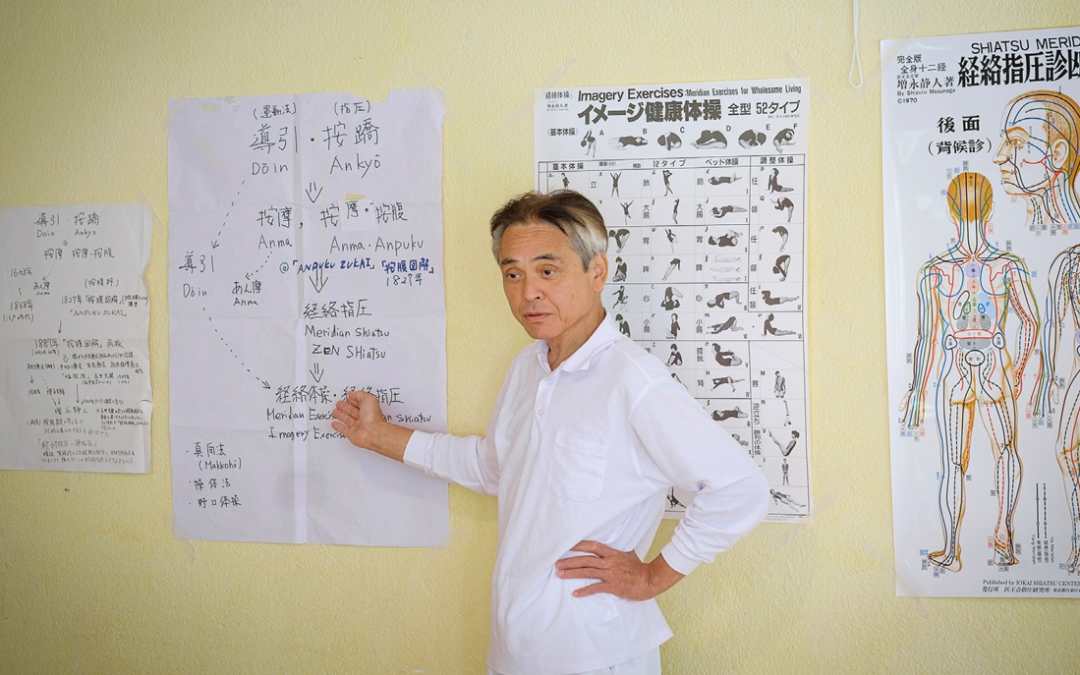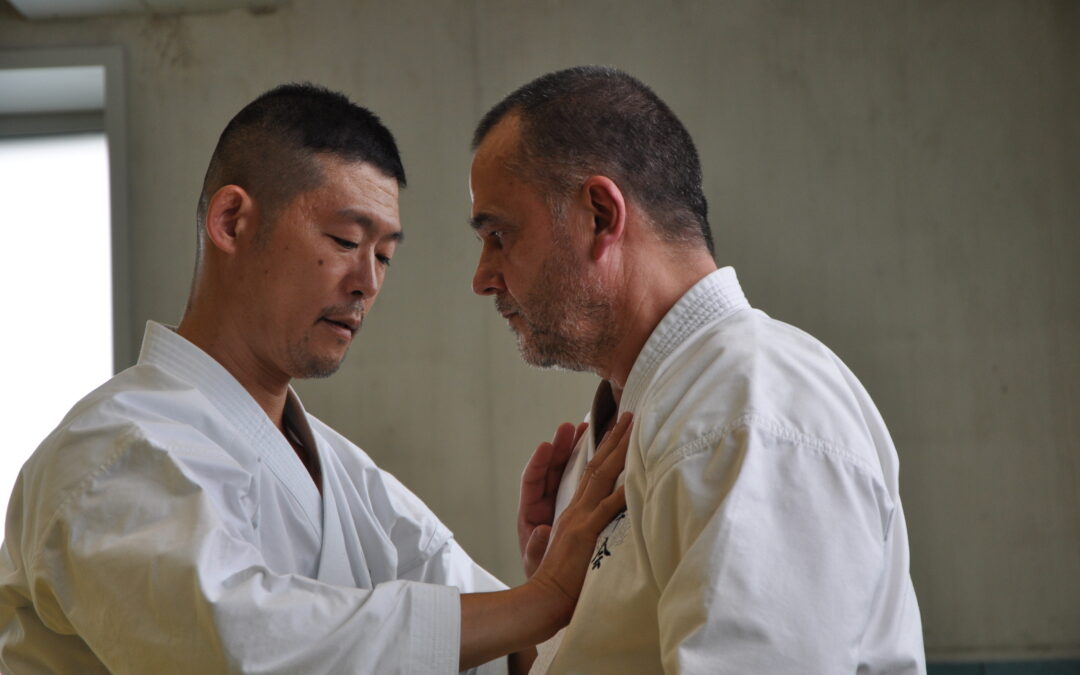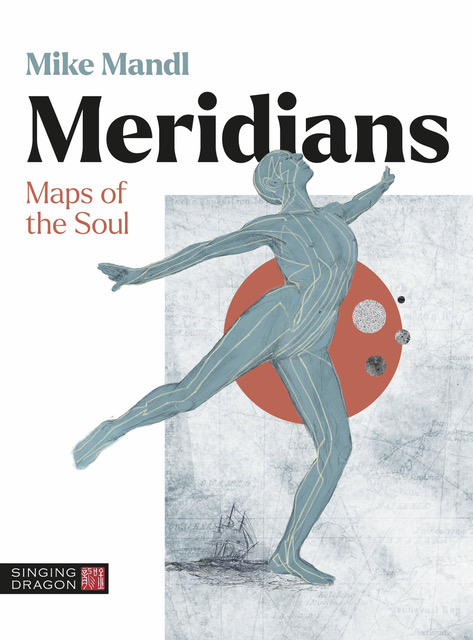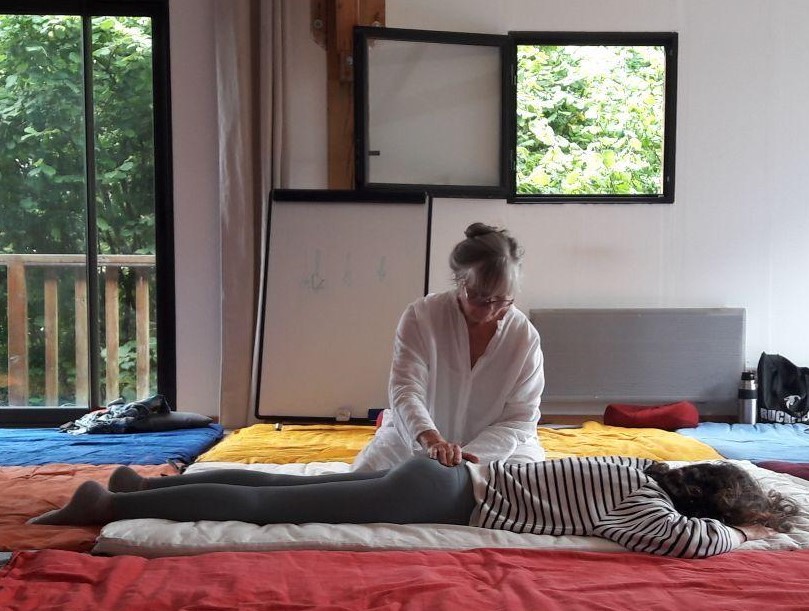Where did I end up there? All around me howls and screams, people rolled like
carpets across the floor, thrashing, shaking, plus a hell of a racket – in other words: pure chaos, mayhem! Was I perhaps too naive when I registered for a Sei-Ki workshop with Kishi in the spring of 1983, still a beginner in Shiatsu? Confused rumors and myths were swirling around in the Shiatsu scene about this Japanese man, who years ago had been sent to the West by Masunaga himself as an ambassador for Shiatsu. So this Sei-Ki course should only be an enrichment for my Shiatsu path! – Attention, spoiler: yes, great enrichment! But before the common path really began, I needed seven years to digest the experiences, impressions and ideas from this initial workshop.
Kishi was just twenty-one when he came to Paris in 1971 to bring shiatsu to the European world on behalf of Masunaga. Kishi spoke hardly any English and zero French, had completed his training at the Namikoshi Shiatsu School and soon became Masunaga’s personal assistant. The master recognized the talent. After Kishi’s return, the two remained in collegiate contact for a good ten years, researched Shiatsu, and traveled through the Asian world together as members of Japanese trade missions to present the method: a large hall with many spectators, on stage Masunaga with microphone, Kishi simultaneously demonstrating what the master explained. There are still some yellowed black and white photos of it around.
The disturbing experience in that workshop – these physical as well as psychological-emotional discharges – is known in Japan under the term katsugen; and cathartic release of inner tension is also well known in western psychology. Katsugen can be described as spontaneous movement or movement from within. There are preparatory exercises for this. When the head gives up control, when blockages are released, the original life force can express itself. This is letting go and disccharge of accumulated garbage on every level, a liberation. And it’s trusting the body’s wisdom to regulate and heal itself through it – an overhaul and renewal of the energy system from within.
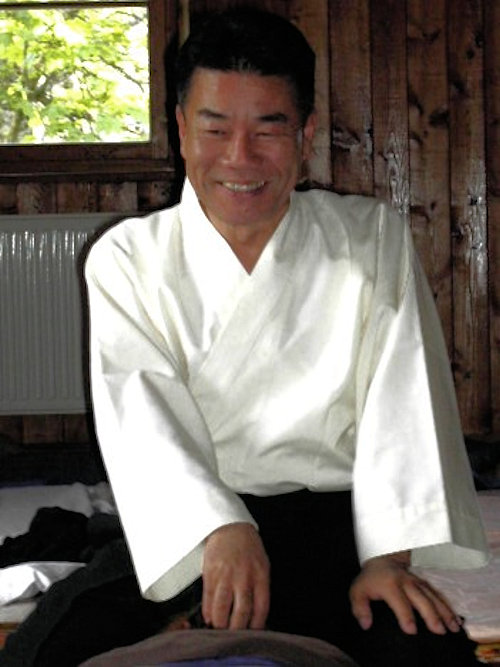
And that’s what Kishi was all about when he developed his method: the free flow of Ki. At first he called it Shinto-Shiatsu, namely a form of Shiatsu linked to the shamanistic content of the original Japanese tradition. He was passionate about the Hara culture of ancient arts – Shodo, Aikido, Chado, Ikebana – just to name a few. He summarized this into a Ki culture with special exercises for Ki development. And over time he had found his personal way of treatment – Sei-Ki-Soho – and developed a whole series of exercises – special purification exercises – to stimulate the Ki to flow freely in every practitioner. In order to bring these roots closer to his students – and this was very important to Kishi – he regularly organized Japan Sei-Ki workshops, in which the participants underwent shintoist purification rituals, practiced the art of calligraphy, got to know the details of the tea ceremony – osaki ni! – or marveling at the secrets of Japanese wood joints, as they are still used in temple construction in Japan today.
Flowing life energy – that’s what Sei-Ki is all about. And “free-flowing ki” could also be the direct literal translation of the term Sei-Ki. Other translations are life harmony movement or energy in harmony, guiding the life energy. When Kishi was once asked for his personal definition of Sei-Ki or what Sei-Ki meant to him, the answer came: “empty space, blue sky”. And another time: “observe how clouds move across the sky…” Hmm, we were amazed and tried, faithful disciples as we were, to decipher the message of the master – and then he had his peace for the time being. When he uttered such wisdom, one could not overlook the mischievousness in his eyes. And yes, he was a joker and a charming prankster.
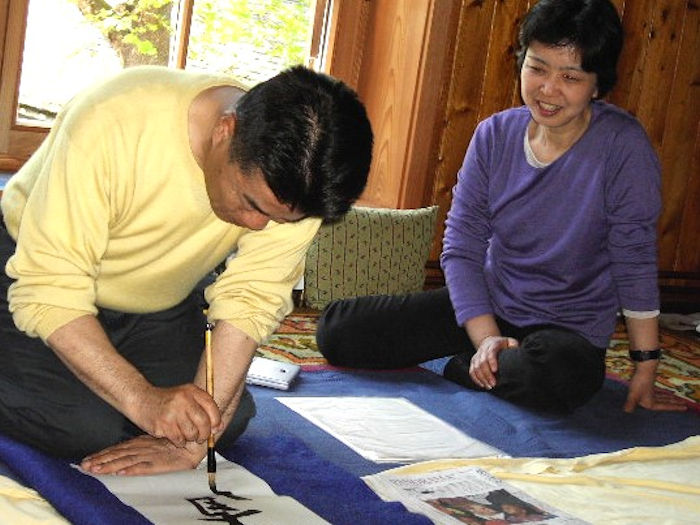
In fact, Kishi kept making fun of the questions from us Shiatsu practitioners. He wasn’t really fluent in German, but he knew the meaning of “Holzkopf” (blockhead) quite well. And so he liked to annoy us with this word, reproaching us for restricting ourselves with techniques and theories instead of creating space; space for immediate perception; space for energy to flow freely; Space to feel and develop yourself. And he always acted as if he had never gone through this development. But 20 years later he was mild with us, because – of course! – there had been a development and there was a rapprochement. We were able to meet him at eye level, discuss and treat each other. And because so many Shiatsu teachers in Germany and Europe have taken part in workshops with Kishi over the years, it cannot be denied that Kishi has had a major influence on the European Shiatsu scene, albeit often unnoticed, possibly even unintentionally and often not recognized,
Kishi himself used the word Holzkopf even for Masunaga. In his book “Life In Resonance” one can read how he admired and revered Masunaga on the one hand and how he experienced his sensei as courageous, innovative, charismatic and inspiring; how Masunaga, on the other hand, was obsessed with his goals, especially in developing a scientifically accepted theory of Shiatsu; and eventually how Masunaga became more and more trapped in his ideas, becoming more alienated and ultimately inaccessible. Too much form, definition and theory – this left no room for further development. Proceeding down this path would also have led Kishi to a dead end. This must have been the reason for him to fundamentally question the way in Shiatsu, as Masunaga had significantly influenced it, and finally to break it off. In his book there are many interesting details worth reading about this time and the developments at that time.
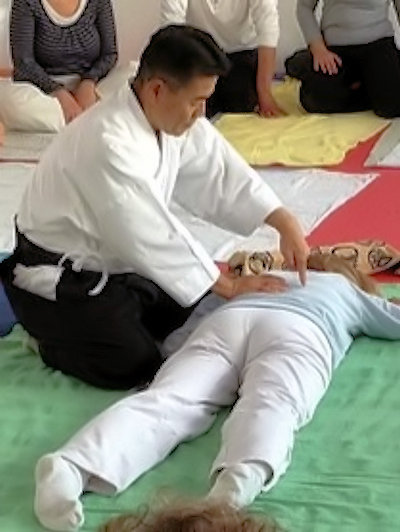
There were two more words that Kishi knew in German: “Zusammenarbeit” (working together) and “gemütlich” (cozy, laid back). One is almost inclined to say it sounds like a comfortable collaboration. And that’s how he, the joker, often described his treatments. He sometimes called the cooperation osmosis, a merging and penetrating. And so his touch was not touch in the usual sense, let alone “finger pressure”; it was rather an unmistakable, direct and clear if not cozy breath (gemütlicher Hauch), working in depth with the exact timing at just the right place with the invitation: go ahead, now do it on your own, I did my part – before he felt attracted to a new position! Often he took his hands away completely, always very present in the perception, in the observation of the breath or other movements of the client, in the sense of: I gave you hints, it’s your turn now. Then he sat again, like a cat on the lookout, waiting for the mouse to appear – and his hand was there. The term “deeply touched” took on a new meaning with Kishi.
A symbol that Kishi often used was that of a map. The map shows a route, but you have to walk it yourself, and the condition of the road can be experienced anew with every meter. So too with Sei-Ki: limited routine, specifications, form and concepts; immediate being is in the foreground, formalized touch, treatment techniques, theories lose their importance. Each treatment is new, the starting point is always the empty mind, mushin. The focus is on the inner alignment, absolute alertness, presence, a sense of wholeness, being a witness, connection in resonance. The body itself is the map, showing what is needed, where to go, and where the next stop is. There is no diagnosis, judgment or determination, there is no treatment as a consequence of that; there is also no healthy or sick, good or bad, kyo or jitsu. The human being as a whole is the focus and is allowed to realize himself in the literal sense.
All of this is to be seen against the background of Shinto, whose simplicity, originality and closeness to nature significantly influenced Kishi’s work. And so in his early years, later together with his wife Kyoko, he kept coming back to a small, rather unknown Shinto shrine in the mountains of Ooeyama. In the big city, however, where today’s Japanese shoppers go in everyday clothes, Kishi stood out from the crowd with dignity in an indigo-colored and hand-woven Hakama, blossom-white Gi and wooden sandals. Yes, even the extravagant was his thing. When he was in Europe, he wore chic designer clothes, loved gourmet cuisine, appreciated good wine and, after dessert, liked a fine cognac. During his years here in Munich, however, Das Weisse Brauhaus im Tal was his favorite place to eat and drink, where he was not averse to the Schneider Weisse and a hearty Bavarian meal. He was a connoisseur, a bon vivant and an artist of life.
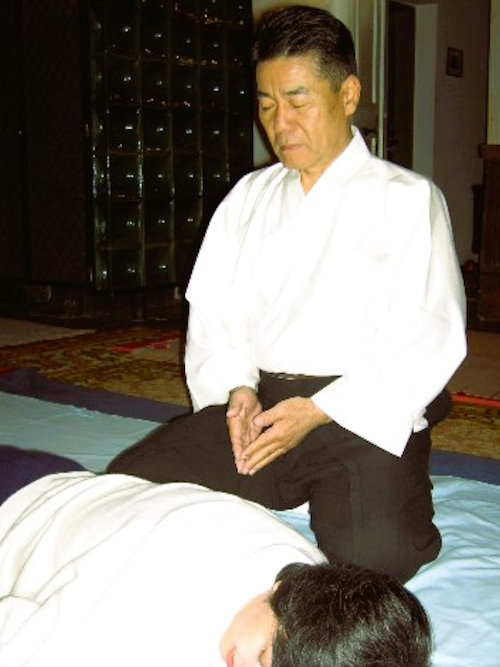
His course titles in recent years have included “There is nothing to do”, “The art of leaving empty space” or, very excitingly, “hand / non-hand”. And so numerous participants in Shiatsu training courses benefited from the freedom that Sei-Ki makes accessible again and again, in order to engage completely with the essentials of our art: honest, authentic touch in simple being. And it may also be gemütlich! How wonderful – thank you Kishi for this gift and reminder! –
12 years ago, in October 2012, Kishi left us. The summer before, when he already felt that he didn’t have much time left, he wrote to his community:
Kishi does not dance any longer, cannot dance either
He does not meet and does not teach
He presents Seiki-Soho never again
He merely continues: innocence carried in a pleasant wind.
He will become a wind himself; gently, silently, caressing your cheek.
Welcome the wind; carry on anyhow and do not stay.
That is the alive way, this is nature.
Kishi san, we miss you!
Author
- In memory of Akinobu Kishi (1949-2012) - 6 February 2024
Translator
- Anpuku Workshop with Ivan Bel in London – 7 & 8th, June 2025 - 22 June 2024
- Summer intensive course: back to the roots of Shiatsu – 7 to 13 July 2024, with Ivan Bel - 27 December 2023
- Interview with Wilfried Rappenecker: a european vision for Shiatsu - 15 November 2023
- Interview : Manabu Watanabe, founder of Shyuyou Shiatsu - 30 October 2023
- The points that chase away Dampness - 11 June 2023
- Interview Mihael Mamychshvili: from Georgia to Everything Shiatsu, a dedicated life - 22 April 2023
